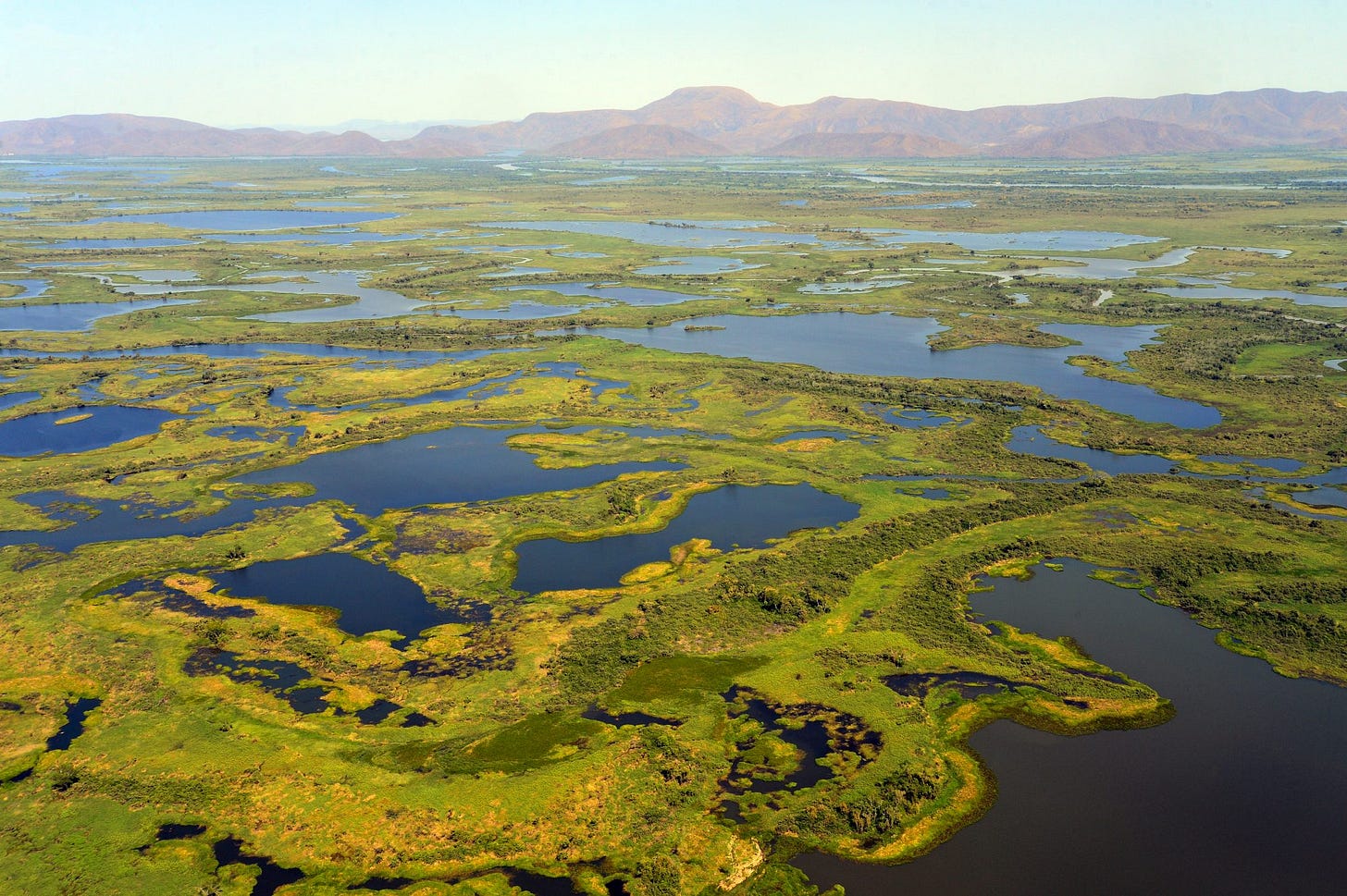#21 Wetlands
Key for carbon storage and water management
Read time: 3 minutes
In this week’s issue you will learn about the best type of ecosystem we have for fighting climate change: Wetlands
“Wetlands store 5 times more CO2 than forests and as much as 500 times more than oceans” - Ralph Temmink, researcher at Utrecht University
Top News 🗞️
Doñana drying up: Europe’s most important wetland is severely drying up due to drought, illegal wells and intensive irrigation.
Sponge cities: China is leading the implementation of natural urban design to make its cities absorb water. Other countries are following.
Increased global awareness: Wetlands used to be disregarded but luckily they are now starting to be given the importance they deserve in many countries’ and organizations’ policies.
Let’s dive in 🧠
What are they?
Wetlands are those areas where the water covers the soil all year long or during specific time periods.
There are several types of wetlands (swamps, marshes, etc.) and they can be found all around the world.
But sadly they are disappearing at an alarming rate.
⅓ of the world’s wetlands have been lost in the last 50 years, a rate 3 times faster than forests.
So why should you care?
Because wetlands are awesome at fighting climate change and water issues.
Here’s why they are awesome
Carbon:
Wetlands remove and store large amounts of carbon dioxide from the atmosphere. They only cover 3% of the Earth’s land surface but store 30% of all land-based carbon.
They are very good at capturing and storing carbon for 2 main reasons.
Growth: Their plants usually grow a lot each year, and in the process, capture (or sequester) large amounts of CO2.
Oxygen: Their soils have very little oxygen so carbon that gets incorporated into the soils decomposes very slowly and can persist for hundreds or even thousands of years (carbon storage).
Water:
They are hydrological buffers that limit floods, maintain water supplies in drought, help water to infiltrate soils, replenish underground water reserves, filter waste water, and sustain freshwater biodiversity.
On top of all of this wetlands can be rehabilitated quickly, while a forest takes decades to grow and is more susceptible to destruction by fire.
Why are they disappearing?
Unsustainable development: Millions of hectares have been drained to provide land for housing, industry and agriculture.
Pollution: 80% of our global wastewater is released into wetlands untreated. Pollution from factories, fertilisers, pesticides or from major spills all destroy wetlands.
Climate change: Changes in rainfall and temperature makes them dry out.
So now you know when we wetlands are destroyed we are losing a lot. We always talking about forests but we can’t forget about wetlands.
Top Companies 💰
Luckily, there are companies and organizations working to protect wetlands.
Terrra 🇮🇱 : They are incentivizing the conversion of land into wetlands by connecting landowners and buyers of CO2 credits.
Maven 🇨🇦 : They make environmentally-friendly water treatment technologies for the mining and oil and gas sectors in order to reduce the pollution that arrives to wetlands and other water bodies.
Ecological Service Partners 🇺🇸 : They purchase vast amounts of land and then restore it and conserve it. They are the leading provider of investment capital for large-scale mitigation projects.
❗Extreme knowledge area❗
Interactive map: A cool way to see all the details about where wetlands are located around the world.
Chinese sponge cities: An awesome video to learn more about this urban design concept that’s become really famous worldwide after its success in China.
That’s it for today, 1 climate tech topic in under 5 minutes.
Next week…Smart Grids! 🤯
If you enjoyed today’s issue, the best compliment you could pay me would be to share it with one person who you think would benefit from it :)









